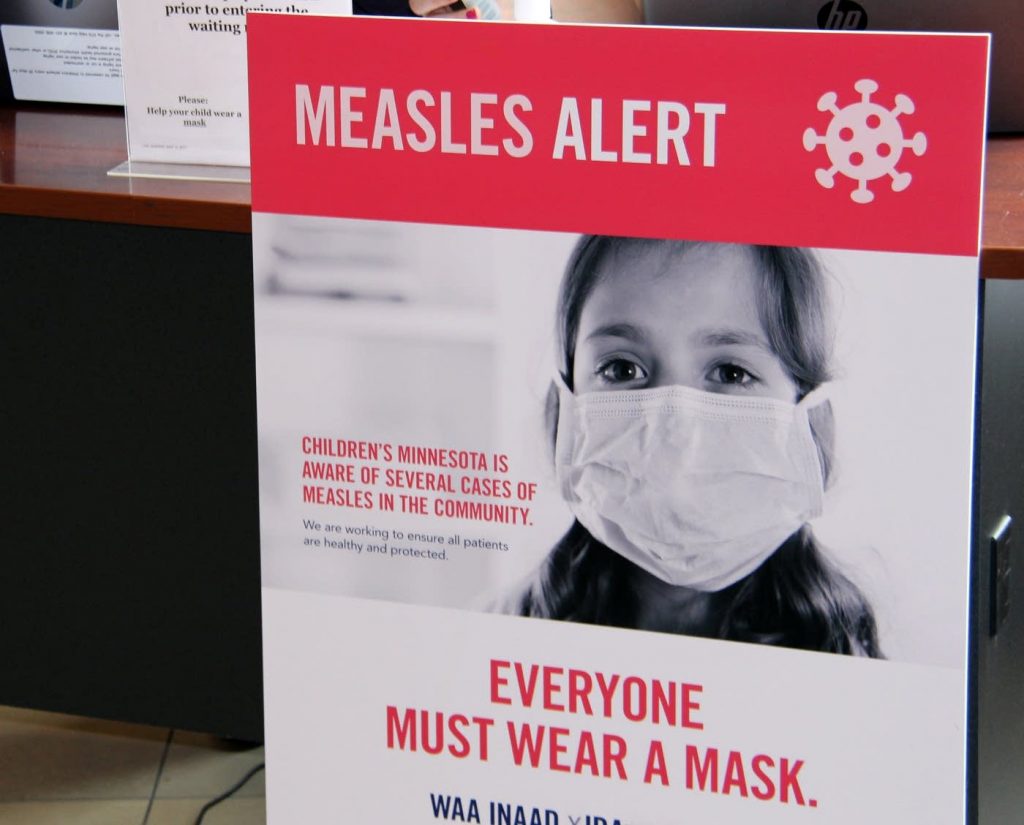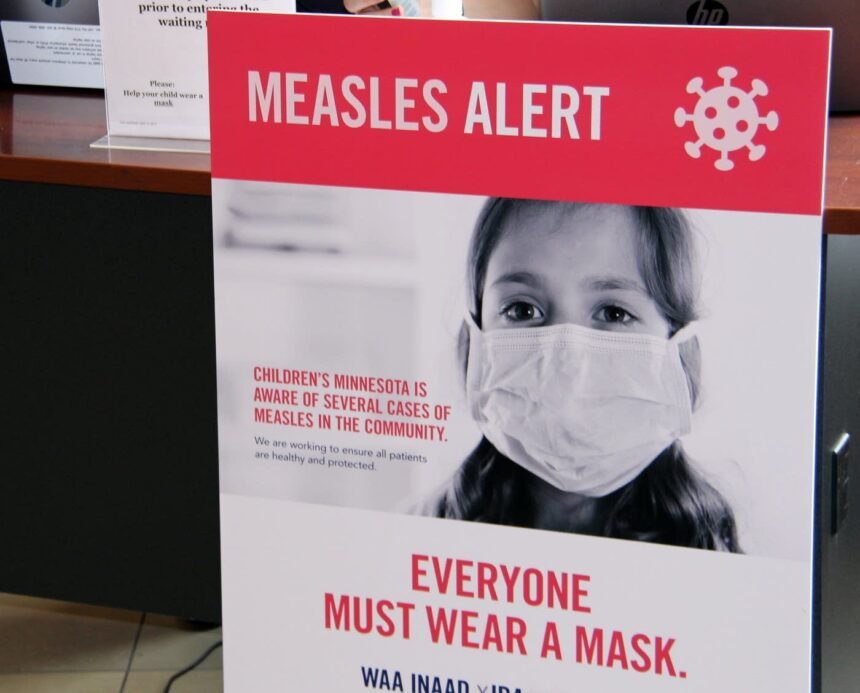
Mark Zdechlik | MPR News
Minnesota’s measles outbreak has grown to 51 cases as of Thursday, and most infected are unvaccinated children in the Somali community living in Hennepin County, as confirmed by the state health department. Twelve people have been hospitalized.
This is what I was going to suggest: Across the board, people are challenging the need for all vaccines, not just the measles, mumps and rubella (MMR) vaccine. The general vaccination rate is even lower in the Somali community, Dr. Michael Osterholm, head of the Center for Infectious Disease Research and Policy at the University of Minnesota, told MPR News.
“The challenge we have is that misinformation initially got shared in the Somali community … we had these individuals who preyed on, I believe, the susceptibility of these parents who had children with autism to believe that, in fact, they were caused by a measles vaccine, which is simply not true,” Osterholm said.
The majority of Minnesota’s measles cases this year affected people between the ages of one and 19. Children are at a higher risk of developing severe disease.
“I think it’s really important to emphasize that measles, which is one of the most highly infectious diseases we know of — surely as infectious, if not more infectious than even COVID — and if you are unvaccinated or unprotected from having a previous infection, if this virus is in the community, it’ll eventually find you,” he continued.
After more than two decades of measles being declared eliminated by the Centers for Disease Control, such vaccine hesitancy has case counts ticking upward. In Minnesota, parents or guardians can opt their child out of getting vaccines required by schools with a notarized exemption, whether for medical reasons or personal beliefs.
This week, Minneapolis Public Schools notified parents of the outbreak reaching the district but didn’t name or quantify any schools or cases. Osterholm believes there will be a “substantial increase” in measles infections in the coming months because of slipping vaccination rates.
Vaccine hesitancy is spreading to pet owners as well.
“We’re hearing from a number of our veterinary colleagues that for the first time in their practice, they’re seeing individuals refusing to vaccinate their dogs and their cats against rabies because they don’t want to, again, be told what to do,” Osterholm added.
Rabies vaccines help protect pets from spreading the infection amongst one another and from transmitting the virus to humans.
“This is a phenomenon that public health has to deal with,” Osterholm said. “We have to recognize we’re in a different age than when we were when I started in the business 50 years ago … we’ve come a long way from when parents in the 1950s and 60s couldn’t wait, couldn’t wait, to get their children vaccinated for polio. Today, it’s just the opposite.”
How to improve messaging around the importance of vaccination remains unclear, Osterholm said, though it’s quite apparent people don’t want mandatory, top-down orders.
Measles symptoms usually include a rash and a fever and appear eight to 12 days after exposure. The MMR vaccine has been in circulation for more than 50 years and is proven to be safe, MDH advises. Recommendations generally are for children to get two doses — the first between 12-15 months old and the second at 4-6 years of age. Minnesotans with questions about their immunization record can find information online from MDH.
Source: MPRNEWS


Leave a Reply